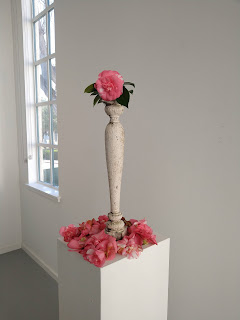In my free time, I like to use the darkroom at Mills College. I've been experimenting with X-ray film just because it's so cheap and there's plenty available. Recently it occurred to me that some areas I have access to aren't in use. So for a long weekend, I co-opted a little gallery space "Slide Space 123" to do some shooting.
The natural light in Slide Space is nice. There are white walls, and plenty of room to navigate. At one point I had a 4x5 (an old Toyo my high school teacher Mr Bernucci gave me,) My Linhof 5x7 and my red bellows 8x10 that my grandfather gave me all setup swapping cameras for similar scenes.
So far I've only developed the 8x10 xray films. I had trays setup in a darkroom and would shoot a sheet and walk it over and develop it immediately afterwards.




Comments
Post a Comment